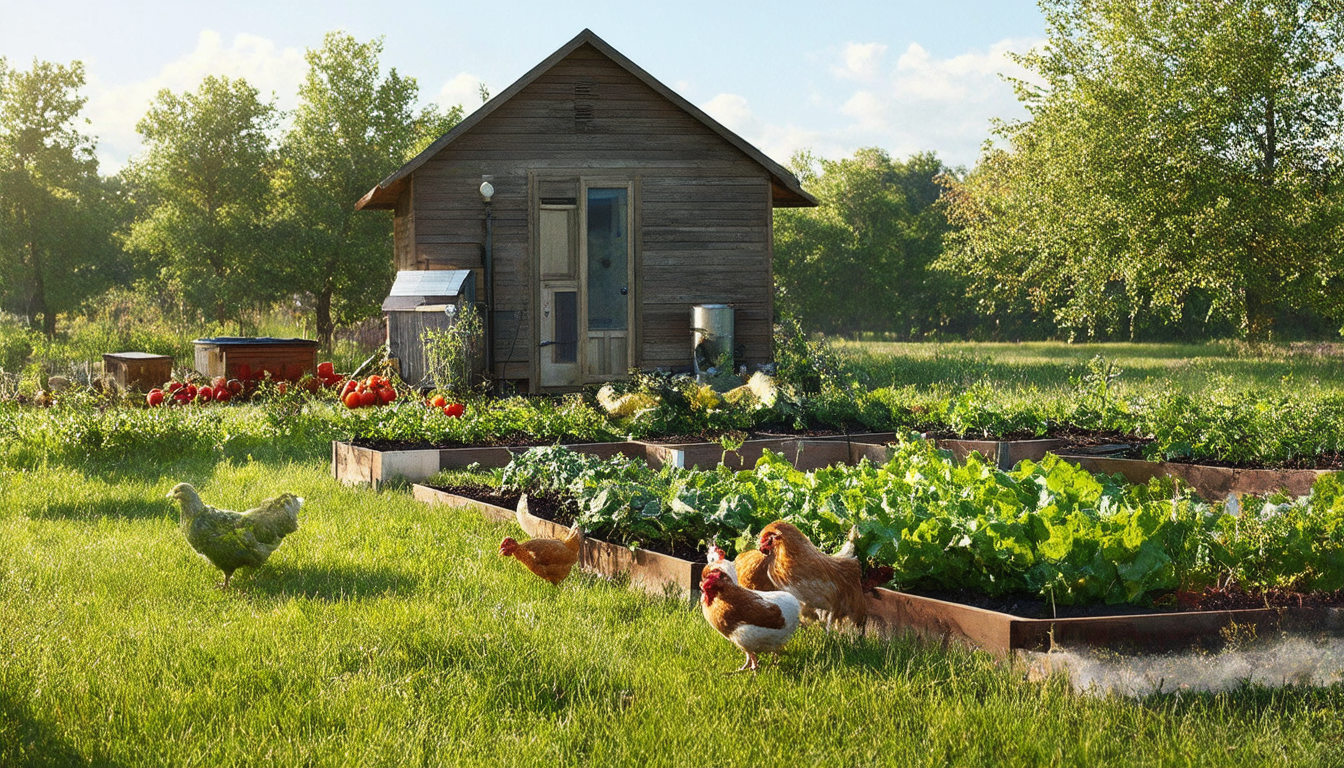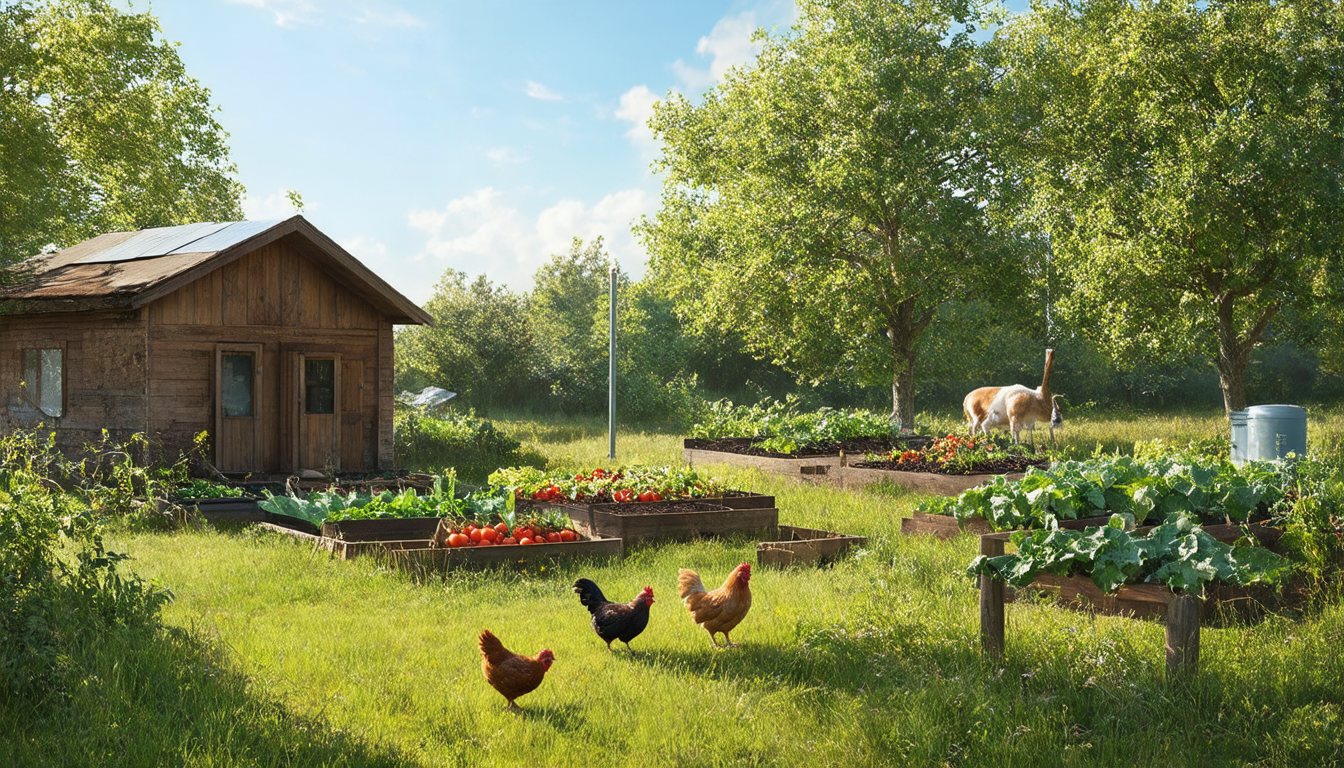Are you yearning for a life that is both sustainable and in tune with nature? Creating a self-sufficient homestead can often feel overwhelming, as many aspire to produce their own food and resources yet struggle with the necessary skills and knowledge to embark on this rewarding journey.
The Ultimate Guide to Building a Self-Sufficient Homestead offers a comprehensive roadmap for those looking to embrace a lifestyle focused on sustainability and self-sufficiency. It emphasizes the importance of creating a home where individuals can produce food, energy, and other necessities directly from their land. The guide introduces essential skills required for homesteading, such as gardening, animal husbandry, and resource management, while also providing practical advice and step-by-step instructions. By aligning daily living with personal values and environmental considerations, this resource encourages readers to cultivate their lands and take control of their food sources, ultimately fostering a lifestyle that is in harmony with nature.
Comparison of Key Aspects in Building a Self-Sufficient Homestead
| Aspect | Description |
| Self-Sufficiency | Ability to produce basic needs such as food, water, and energy. |
| Skills Required | Includes gardening, food preservation, and animal care. |
| Initial Investment | May require purchasing land, animals, and necessary tools. |
| Food Production | Growing crops and raising livestock for sustenance. |
| Sustainability | Practices should minimize environmental impact and waste. |
| Community Resources | Utilizing local networks for exchange and support. |
| Emergency Preparedness | Being ready for unforeseen challenges and hardships. |
| Energy Independence | Generating your own power through renewable resources. |
| Personal Values | Aligning your lifestyle with eco-friendly and sustainable ethics. |

- Essentials for Self-Sufficiency
- Land selection and preparation
- Food Production
- Growing fruits and vegetables
- Raising livestock
- Water Supply
- Rainwater harvesting
- Well digging
- Energy Generation
- Solar power installation
- Wind turbine setup
- Waste Management
- Composting techniques
- Sustainable waste disposal
- Skills Development
- Gardening
- Canning and food preservation
- Basic carpentry and repairs
- Community and Resources
- Connecting with local homesteaders
- Utilizing local markets
Building a self-sufficient homestead is more than just a trend; it is a way of life aimed at sustainability and self-reliance. This guide will cover essential skills, resources, and practical steps to create a homestead that not only meets your basic needs but also aligns with your personal values and connection with nature. From food production to energy generation, you’ll discover how to cultivate a homestead that thrives on natural resources and minimizes reliance on outside systems.
Why Build a Self-Sufficient Homestead?
The first step in your journey towards a self-sufficient homestead is understanding its benefits. Creating a homestead allows you to produce your own food, generate power, and maintain your lifestyle in harmony with nature. Here are some compelling reasons to consider:
- Independence: Reduces reliance on corporate food systems.
- Sustainability: Promotes eco-friendly practices and conservation of resources.
- Healthier Living: Provides access to fresh, organic produce.
- Cost Efficiency: Decreases long-term food and energy costs.
Getting Started on Your Self-Sufficient Homestead
Establishing a self-sufficient homestead can seem daunting, but it is an achievable goal with a step-by-step approach. Start by assessing your values and priorities to create a clear vision. Consider the following elements as you plan:
- Identify your land requirements and potential locations.
- Select the types of crops and livestock suitable for your climate.
- Invest in tools, seeds, and additional resources like solar panels.
- Design your homestead layout for optimal efficiency.
Essential Skills for a Self-Sufficient Lifestyle
Success in homesteading requires a diverse skill set that you can improve over time. Here are some vital skills to develop:
- Gardening: Learn about crop rotation and seasonal planting to maximize your yields.
- Animal Husbandry: Understand how to care for livestock, including feeding, shelter, and breeding.
- Food Preservation: Master techniques such as canning, fermenting, and drying to store food for the long term.
- Basic Construction: Acquire knowledge in building and maintaining shelters, fences, and storage units.
Planning Your Self-Sufficient Homestead
Once you have a vision and the essential skills, it’s time to create a concrete plan. Consider the following steps:
- Choose the Right Land: Look for arable land with access to water and sunlight.
- Design Your Layout: Organize your garden, animal pens, and living spaces efficiently.
- Implement Sustainable Practices: Introduce permaculture principles to enhance your ecosystem.
- Plan for Resources: Incorporate rainwater collection and solar energy solutions.
Building a Self-Sufficient Infrastructure
Your homestead’s infrastructure will support your daily activities. Consider incorporating these elements for a truly self-sufficient setup:
- Greenhouses: Extend your growing season and increase productivity.
- Composting Systems: Create nutrient-rich soil from kitchen scraps and yard waste.
- Animal Shelters: Ensure your animals are protected from the elements.
- Renewable Energy Systems: Explore options like wind turbines and solar panels to power your homestead.
Embracing Sustainable Practices
In your pursuit of self-sufficiency, it’s essential to embrace sustainability. Here are some strategies to implement:
- Crop Rotation: Prevent soil depletion by rotating your crops seasonally.
- Permaculture: Design your land to work with natural ecosystems.
- Minimal Waste: Adopt a zero-waste mindset and find ways to reuse materials.
- Natural Pest Control: Utilize beneficial insects and organic solutions to protect your crops.
Continuing Your Homesteading Journey
The journey to a self-sufficient homestead doesn’t end once you’ve built your infrastructure. It evolves continuously as you learn, adapt, and grow. Here are resources to guide your continued education:
- The Ultimate Guide to Building a Survival Homestead
- Plan Your Self-Sufficient Homestead
- Create a Self-Sufficient Homestead
- The Ultimate Guide to Self-Sufficiency and Homesteading
- The Homesteading Handbook

Frequently Asked Questions
What is a self-sufficient homestead? A self-sufficient homestead is a lifestyle focused on producing the majority of one’s food and necessities from personal land, allowing individuals and families to become more independent.
Why should I consider building a self-sufficient homestead? Building a self-sufficient homestead is not only about preparing for challenging times; it’s about creating a sustainable life that aligns with your values and promotes a deeper connection with nature.
What skills do I need to develop for a successful homestead? Essential skills for self-sufficient living include gardening, animal husbandry, food preservation, basic construction, and renewable energy management. These skills can be learned and improved over time.
How can I start my journey toward self-sufficiency? Begin by assessing your immediate resources and needs. Start small with manageable projects, and gradually expand your knowledge and capability in areas like gardening, raising livestock, and energy generation.
Is homesteading practical in urban areas? Yes, even in urban settings, you can practice elements of homesteading such as container gardening, composting, and cooking from scratch, thus enhancing your self-sufficiency.
What initial investments are required for a self-sufficient homestead? Initial investments may include purchasing land, seeds, tools, animals, and possibly infrastructure like greenhouses or solar panels. However, these can lead to long-term savings in grocery and energy costs.
Can I really generate my own power and water? Yes, many homesteaders utilize solar panels, wind turbines, or rainwater harvesting systems to generate their own power and water, significantly reducing their reliance on external utility services.
What are some common challenges faced when starting a homestead? Common challenges include soil health, weather conditions, pests, and the learning curve associated with developing new skills. Persistence and ongoing education can help overcome these obstacles.
How important is community support in homesteading? Community support can be incredibly beneficial for sharing resources, knowledge, and experiences, making your homesteading journey much smoother and more enjoyable.
